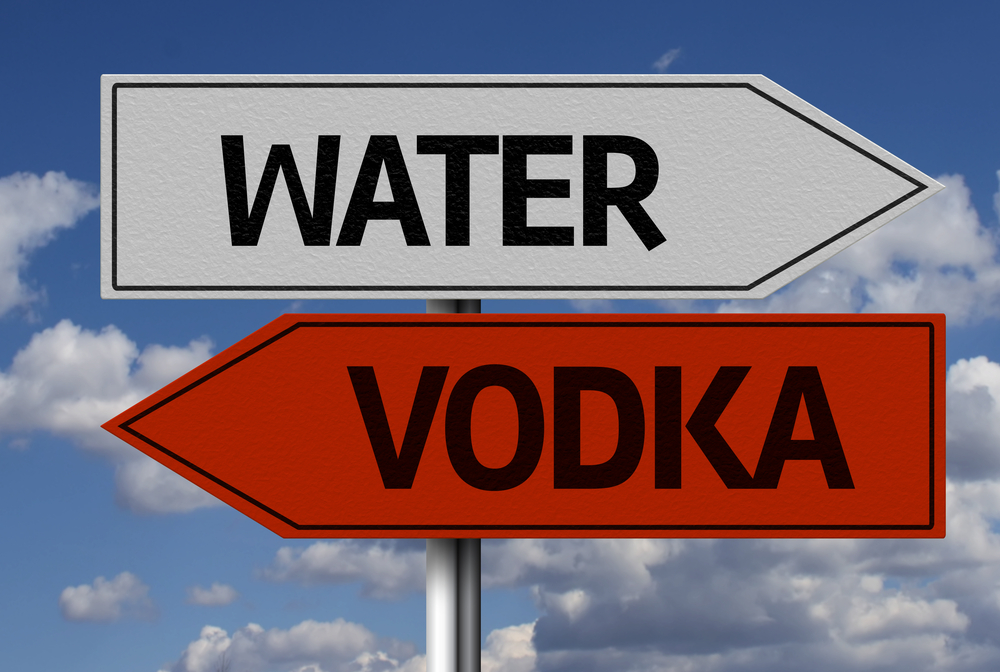
It is well known that alcohol use disorders can cause a lot of harm to the individual and to others around them. Despite this, the treatment of alcohol use disorders still proves to be highly challenging. Many have attempted to test a range of psychological and pharmacological treatment, or a combination of the two, in an attempt to establish what works with this client group.
A small number of medications to treat alcohol use disorders have emerged over the years, first disulfiram and more recently naltrexone and acamprosate. Each of these is approved by the FDA and are generally recommended for maintenance of abstinence; however they are all reportedly considerably underused (Harris, Kivlahan, Bowe et al. 2010; Harris, Oliva, Bowe et al. 2012). This may be due to a lack of familiarity with the medications or lack of confidence in their effectiveness.
In response to this, the authors of a recent meta-analysis published in JAMA, aimed to locate research studies that have evaluated medications for reducing alcohol use and improving health outcomes for adults with alcohol use disorders, and use these to determine the efficacy of such medications.
Methods
The authors located relevant studies through searching a number of databases, reference lists and sources for unpublished work. They were looking for studies that assessed the outcomes of alcohol consumption, motor vehicle crashes, injuries, quality of life, function, mortality and harm. The meta-analysis included 122 randomised control trials and 1 prospective cohort study, with a total of 22,803 participants. Most studies assessed acamprosate (27 studies, n = 7519), naltrexone (53 studies, n = 9140) or both, with a few exceptions.
The trials included in the analysis often evaluated medication alongside a psychosocial intervention, and so according to the authors the effect sizes here reflect the added benefits of medication beyond those of psychosocial interventions and placebo.

This study included a whopping 122 RCTs, so thanks are due to the systematic reviewers who read and summarised those trials so you don’t have to
Results
Consumption outcomes
- To prevent 1 person from returning to any drinking, 12 people would need to be treated with acamprosate (95% CI, 8 to 26; 16 trials, n = 4847) and 20 with oral naltrexone (95% CI, 11 to 500; 16 trials, n = 2347)
- To prevent 1 person from returning to heavy drinking, 12 people would need to be treated with oral naltrexone (95% CI, 8 to 26; 19 trials, n = 2875). Acamprosate was not associated with improvement on this outcome
- For both injectable naltrexone and disulfiram, there was no significant association with the return to any or heavy drinking, although oral naltrexone was associated with a reduction in heavy drinking days (WMD -4.6%; 95%CI, -8.5% to -0.56%; 2 trials, n = 926)
- In a direct comparison of naltrexone and acamprosate, the meta-analysis found no statistically significant difference between the 2 medications
- For the few studies included on medications other than those mentioned above, the evidence was generally insufficient to determine whether or not they are effective, or suggested that they are not. There were a few exceptions, with some positive outcomes reported for topiramate, nalmefene and valproic acid

Stereotypical national costumes aside, 12 people would need to be treated with acamprosate to prevent 1 person from returning to any drinking
Health outcomes
- Unfortunately, data in relation to the health outcomes was insufficient in the majority of trials. One of the largest trials, the COMBINE study (Anton, O’Malley, Ciraulo et al. 2006), reported some improvement in quality of life for those who received naltrexone plus a behavioural intervention, but the difference between groups did not reach statistical significance
Adverse effects
- In general, more adverse effects were associated with the medications compared to placebo, although differences were not statistically significant
- When comparing naltrexone and acamprosate, the risk of headache and vomiting were slightly higher for those treated with naltrexone
- Compared with placebo, acamprosate had a higher risk of:
- Anxiety (Number Needed to Harm (NNH) 7; 95% CI, 5 to 11; 2 trials, n = 624)
- Diarrhea (NNH 11; 95%CI, 6 to 34; 12 trials, n = 2978)
- Vomiting (NNH 42; 95%CI, 24 to 143; 4 trials, n = 1817)
- Compared with placebo, naltrexone had a higher risk of:
- Dizziness (NNH 16; 95%CI, 12 to 28; 13 trials, n = 2675)
- Nausea (NNH 9; 95%CI, 7 to 14; 24 trials, n = 4655)
- Vomiting (NNH 24; 95%CI, 17 to 44; 9 trials,n = 2438)
Conclusion
The results suggest that, when used in conjunction with psychosocial interventions, medication can result in better alcohol consumption outcomes for people with alcohol use disorders. Both acamprosate and oral naltrexone were associated with a reduction in return to drinking, and a direct comparison of the two suggests that there is no difference between them in relation to the outcomes. There may also be some early evidence to support the use of nalmefene and topiramate, although very few studies focused on these particular medications.
The review focused on identifying the benefits and harms of medication and how the medications compare with each other. These results reflect any added benefit beyond those of psychosocial interventions, however there is no assessment of how medications and psychosocial interventions compare with each other, or combinations that may be particularly effective, which may have been helpful but perhaps beyond the scope of this review.
Furthermore, most studies required patients to abstain for at least a few days prior to initiating medication; however others found reduced drinking amongst participants who were not abstinent. It may therefore be useful to assess the benefits of medication for patients without a goal of abstinence. And finally, given the costs associated with alcohol use disorders, it would make sense for studies to be measuring health costs as standard, particularly as this evidence appears to be lacking from the studies included in the review.

Both acamprosate and oral naltrexone were associated with a reduction in return to drinking
Links
Jonas DE, Amick HR, Feltner C, et al. Pharmacotherapy for Adults With Alcohol Use Disorders in Outpatient Settings: A Systematic Review and Meta-analysis. JAMA.2014;311(18):1889-1900. doi:10.1001/jama.2014.3628. [PubMed abstract]
Harris AH, Kivlahan DR, Bowe T, Humphreys KN. Pharmacotherapy of alcohol use disorders in the Veterans Health Administration (PDF). Psychiatric Services, 2010; 61(4):392-398.
Harris AH, Oliva E, Bowe T, Humphreys KN, Kivlahan DR, Trafton JA. Pharmacotherapy of alcohol use disorders by the Veterans Health Administration: patterns of receipt and persistence (PDF). Psychiatric Services, 2012 ;63(7):679-685.
Anton RF, O’Malley SS, Ciraulo DA, et al. Combined pharmacotherapies and interventions for alcohol dependence: the COMBINE study: a randomized controlled trial. JAMA, 2006; 295(17): 2003-2017.


RT @Mental_Elf: Acamprosate and oral naltrexone may improve consumption related outcomes for people with alcohol use disorders http://t.co/…
Acamprosate and oral naltrexone may improve consumption related outcomes for people with alcohol use disorders… http://t.co/MJl3BpR8Ew
@Mental_Elf what about baclofen? was that included in ‘the other medications?’
@paulinegrant1 @Mental_Elf Baclofen was included but only 2 CT! Other imp studies/CT excluded. Check here: http://t.co/frWDK5d86Q
@baclofenews @Mental_Elf thank you for this information, very useful.
Today @kathryn_amy87 looks at pharmacotherapy for adults with alcohol use disorders in outpatient settings http://t.co/nTTe0GOeDM
Acamprosate and oral naltrexone for alcohol use disorders http://t.co/V0xax2cF3V
Hampshire Healthcare Library Service liked this on Facebook.
The Mental Elf liked this on Facebook.
Mental Elf: Acamprosate and oral naltrexone may improve consumption related outcomes for people with alcohol use… http://t.co/b6X52D7pDX
12 people would need to be treated with acamprosate to prevent 1 person from returning to any alcohol use http://t.co/nL7UIRIyHm
“Acamprosate and oral naltrexone may improve consumption related outcomes for people with alcohol use disorders” http://t.co/qBFtb3xl0a
Recent @JAMA_current SR finds both acamprosate & oral naltrexone were associated w/ reduction in return to drinking http://t.co/nL7UIRIyHm
@Mental_Elf interesting, counterintuitive- antabuse has no effect. nnt of 12 for acamprosate is potentially a huge financial winner though.
@Mental_Elf the cost burden of alcohol-related problems per patient is huge; preventing one for the cost of 12 courses of acamprosate – big.
Don’t miss: Acamprosate & oral naltrexone may improve consumption related outcomes for ppl w/ alcohol use disorders http://t.co/nL7UIRIyHm
Anne Middleton Phin liked this on Facebook.
Anne Middleton Phin liked this on Facebook.
Hampshire Healthcare Library Service liked this on Facebook.
The Mental Elf liked this on Facebook.